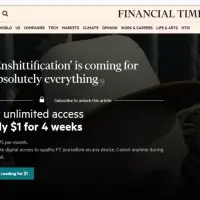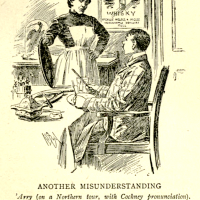 This week, I have been sharing my thoughts about and some highlights from Frederick Buechner‘s recent book, The Remarkable Ordinary: How to Stop, Look, and Listen to Life (2017). Drawing materials from his memoirs–, which are a continual part of my devotional life, Buechner also reminds us in these newly published lectures some key moments in texts like The Alphabet of Grace, A Room Called Remember, and Whistling in the Dark. Buechner wants to draw out how the transformational moments in life are not always remarkable miracles, but the attention to the details, the anticipation of the predictable, and astonished reflection upon the ordinary.
This week, I have been sharing my thoughts about and some highlights from Frederick Buechner‘s recent book, The Remarkable Ordinary: How to Stop, Look, and Listen to Life (2017). Drawing materials from his memoirs–, which are a continual part of my devotional life, Buechner also reminds us in these newly published lectures some key moments in texts like The Alphabet of Grace, A Room Called Remember, and Whistling in the Dark. Buechner wants to draw out how the transformational moments in life are not always remarkable miracles, but the attention to the details, the anticipation of the predictable, and astonished reflection upon the ordinary.
I have shared how Buechner quoted from J.R.R. Tolkien and George MacDonald, so it is only fitting to also share his brief quotation of C.S. Lewis. In his memoir, Buechner includes Lewis among his conversation partners when he worked as a chaplain and religion teacher at a wealthy private school. He also engages with Lewis, MacDonald, Tolkien and others in his chapter, “The Gospel as Fairy Tale” in Telling the Truth (1977). Beuchner also deals with Lewis pretty extensively in Telling Secrets (1981), which has a chapter on “The Dwarves in the Stable” from The Last Battle.
 The Lewis quotation I am highlighting today is not terribly long, but it shocking and perhaps would fit well in its original context. When talking about “the face of Christ” in the people around us, Buechner closes chapter 1 of Remarkable Ordinary with C.S. Lewis:
The Lewis quotation I am highlighting today is not terribly long, but it shocking and perhaps would fit well in its original context. When talking about “the face of Christ” in the people around us, Buechner closes chapter 1 of Remarkable Ordinary with C.S. Lewis:
Then there’s that wonderful passage in C. S. Lewis’s Letters to Malcolm where Lewis speaks of having met a European minister who had seen Hitler. Lewis says, “What’d he look like? What did Hitler look like?” and the minister says, “Like Christ, of course.” Like Christ. Tremendously moving.
Our secret face is that face. Paul’s right—the whole creation is moving, the whole great complex show has started so that we may eventually obtain the measure of the stature of the fullness of Christ, but to see it, the artist says, you have to stop and really look, look for it with X-ray eyes.
This is, of course, one of those moments where a Christian understanding of the “other” can be uncomfortable. In a generation of Christians being paraded across social media and news networks who clearly cannot recognize the face of Christ in the people in their neighbourhoods–let alone in the face of the widow, the orphan, the refugee, the stranger–Lewis’ reminder is essential. In Letter XIV of Letters to Malcolm, Lewis wants to press in on the biblical point that the stranger among us is Christ himself:
“Now the very Pagans knew that any beggar at your door
might be a god in disguise: and the parable of the sheep and
the goats is Our Lord’s comment. What you do, or don’t do,
to the beggar, you do, or don’t do, to Him.”
 Avoiding theological extremes of legalism or what would look today like an “all is god” New Age thought, Lewis instead notes the “brotherhood” of being that is the stranger, the oneness who all share our human flesh. It is this fellowship of humanity that stands in distinction to God, the true Other: “All creatures, from the angel to the atom, are other than God; with an otherness to which there is no parallel.” One must not blur the distinction, for though “God is present in each thing,” it is not necessarily in the same mode or in the same degree. And yet, God is present in each person:
Avoiding theological extremes of legalism or what would look today like an “all is god” New Age thought, Lewis instead notes the “brotherhood” of being that is the stranger, the oneness who all share our human flesh. It is this fellowship of humanity that stands in distinction to God, the true Other: “All creatures, from the angel to the atom, are other than God; with an otherness to which there is no parallel.” One must not blur the distinction, for though “God is present in each thing,” it is not necessarily in the same mode or in the same degree. And yet, God is present in each person:
“In each of them as the ground and root and continual supply of its reality.”
Therefore, of each person, there is both an otherness and a not-otherness, a shared reality and let a separate reality. And of this shared and distinct human experience, Lewis turns to the face of our enemy:
“Therefore of each creature we can say, ‘This also is
Thou: neither is this Thou.'”
Simple faith leaps to this with astonishing ease. I once
talked to a continental pastor who had seen Hitler, and had,
by all human standards, good cause to hate him. ‘What did
he look like?’ I asked. ‘Like all men,’ he replied. ‘That is,
like Christ.'”
Like Christ. Tremendously moving.






















Pingback: Christ and Hitler with C.S. Lewis and Frederick Buechner | Talmidimblogging
Pingback: An Author Who Has Changed My Life, Frederick Buechner, Has Died (1926-2022) | A Pilgrim in Narnia
Pingback: An Author with the Heart of an Inkling « Mere Inkling Press